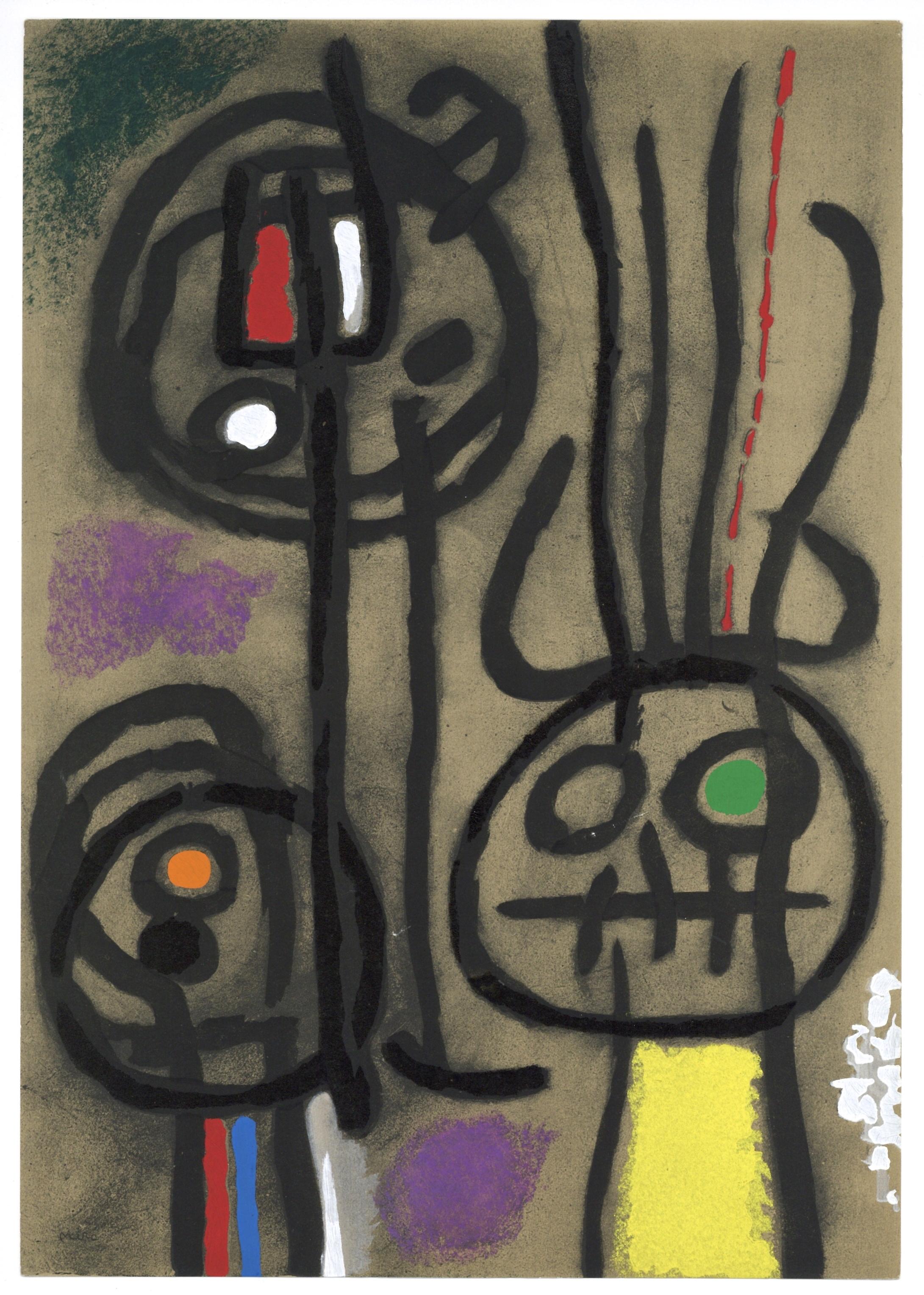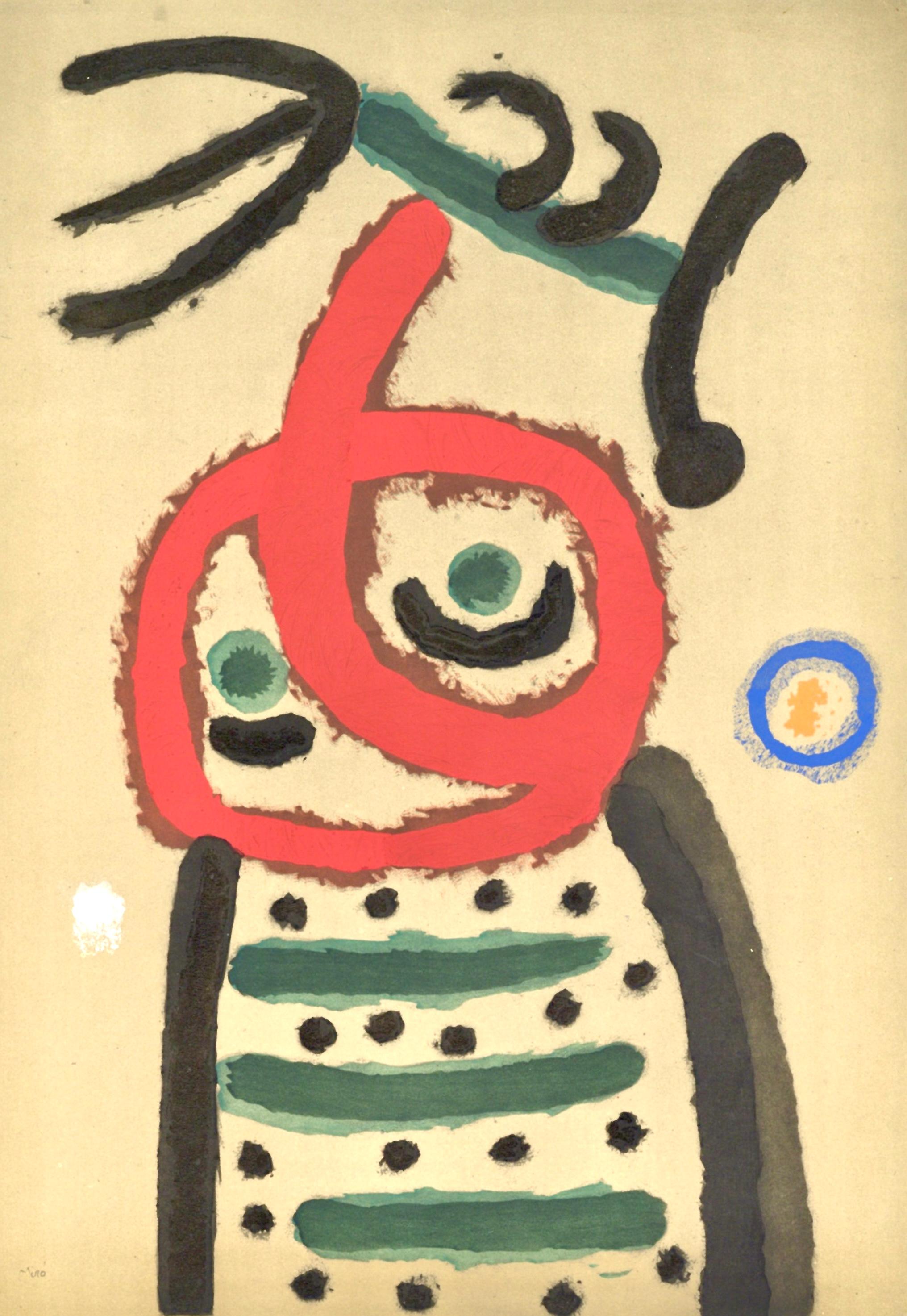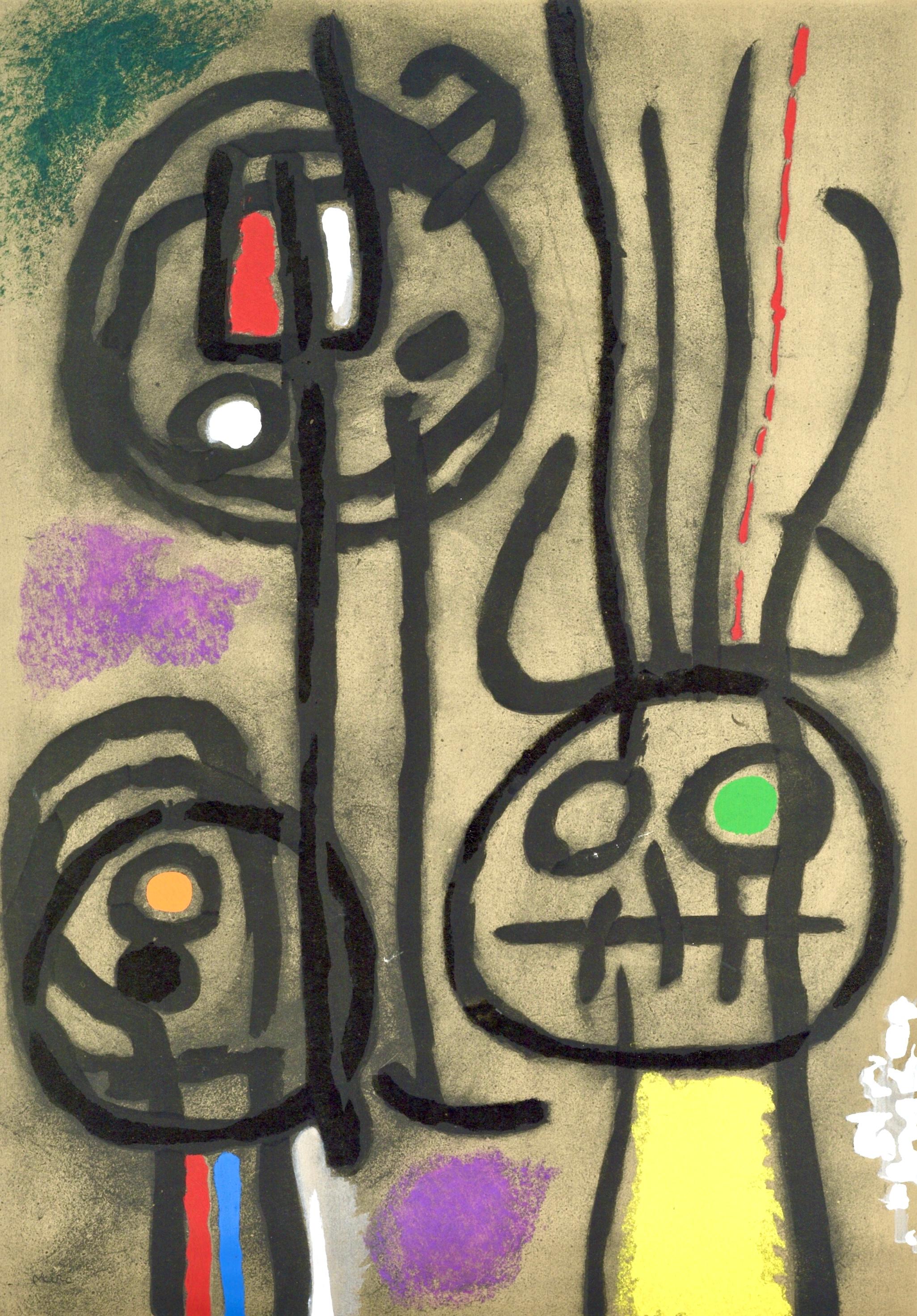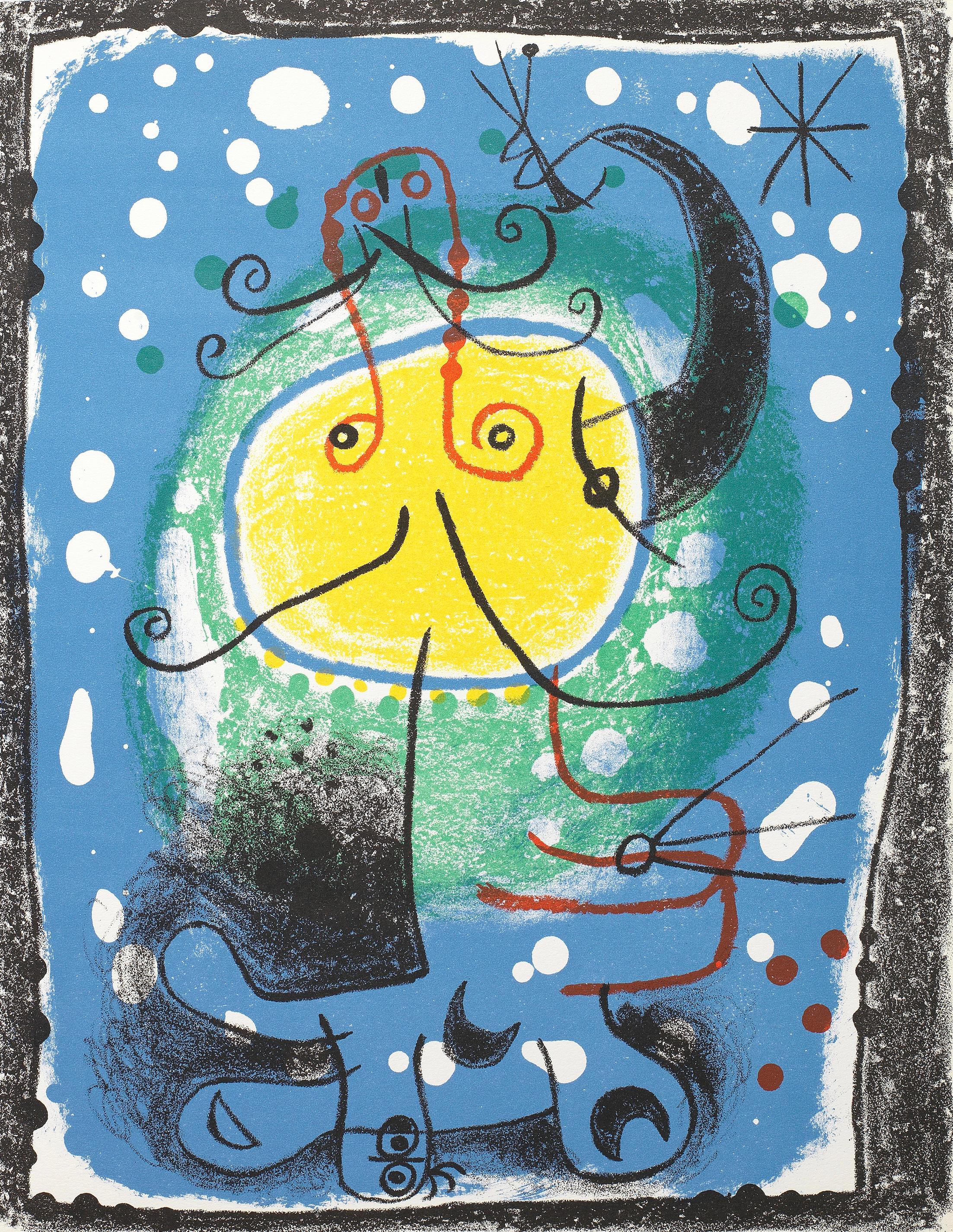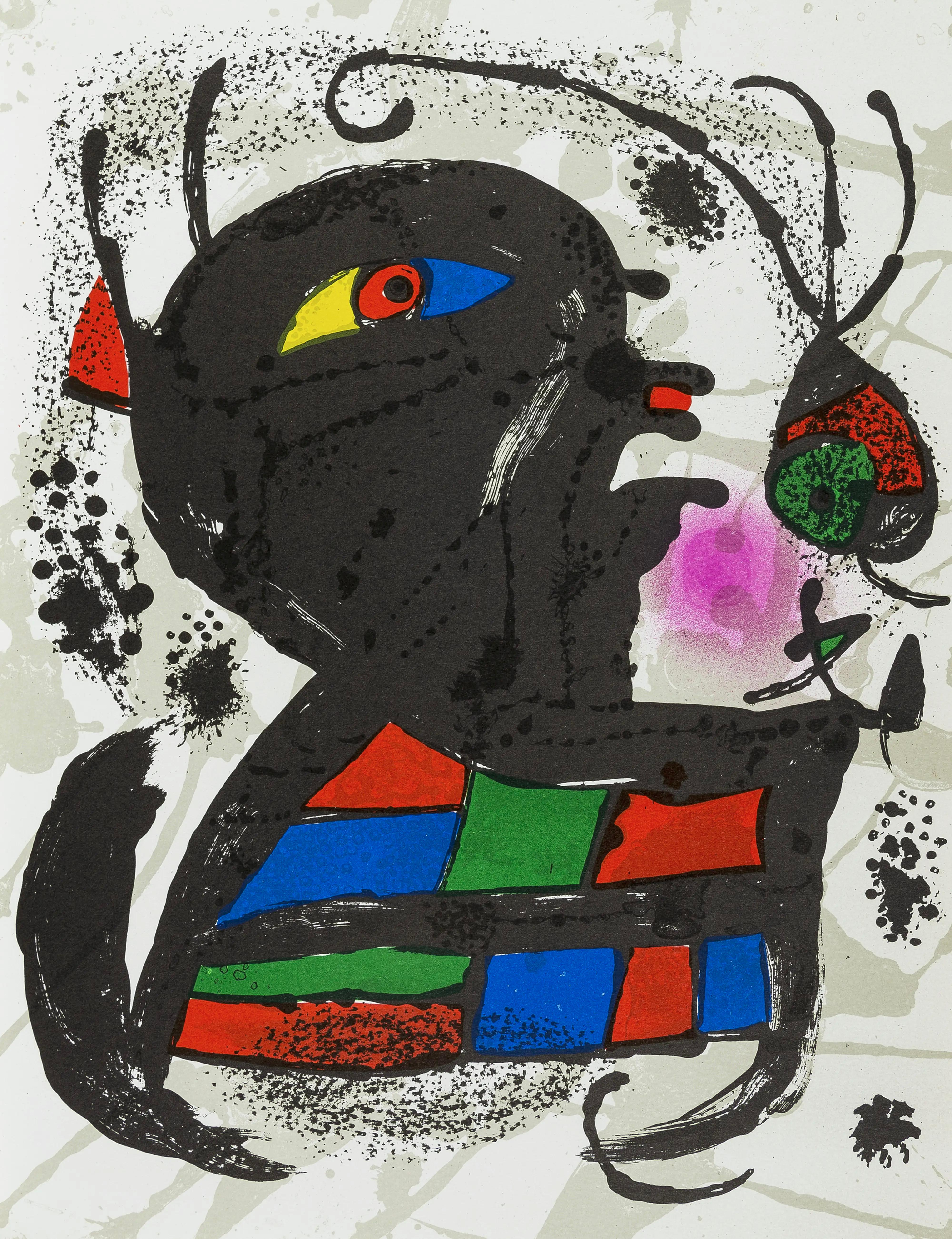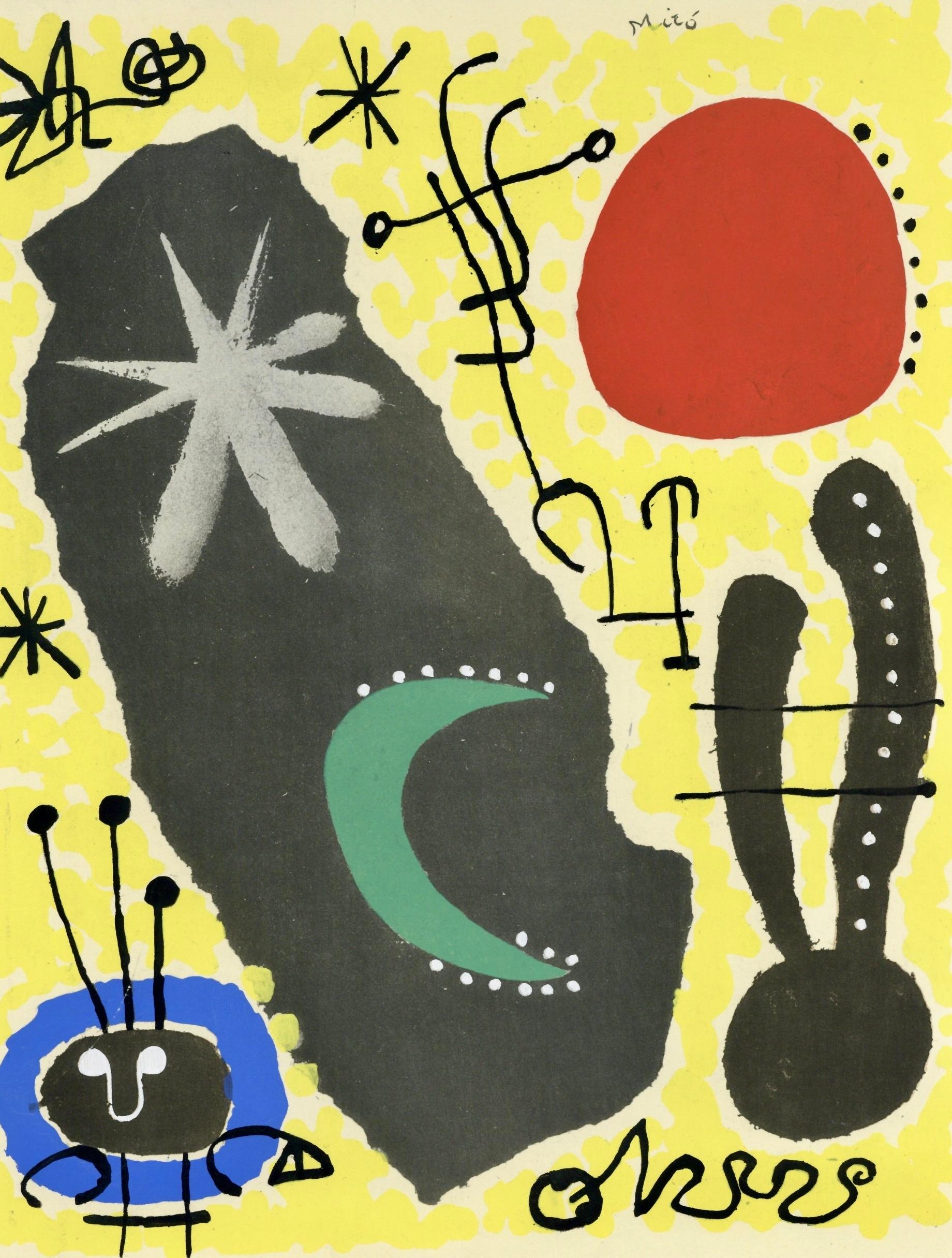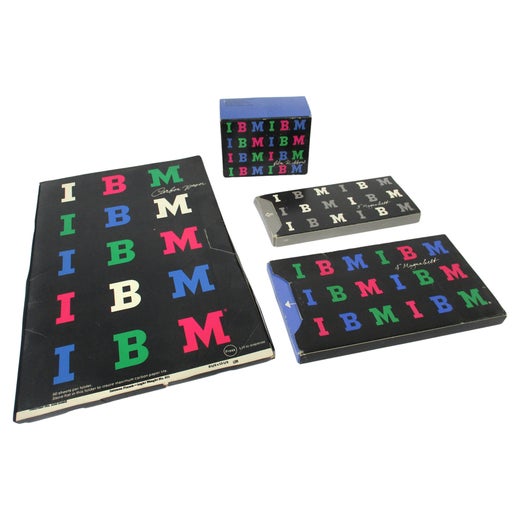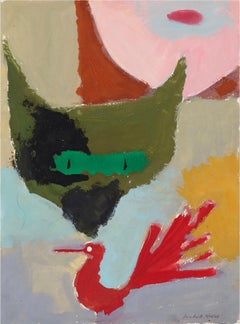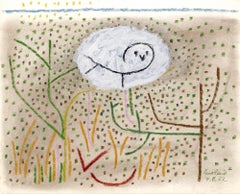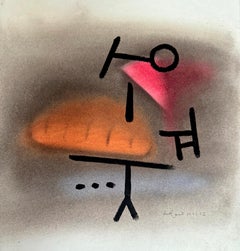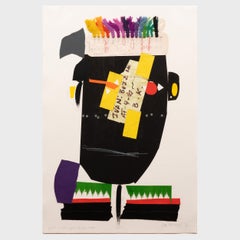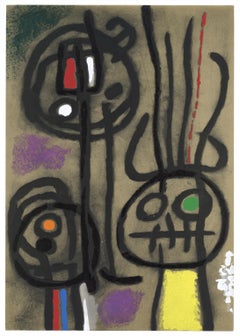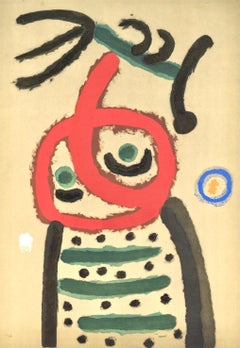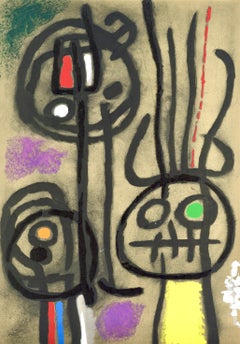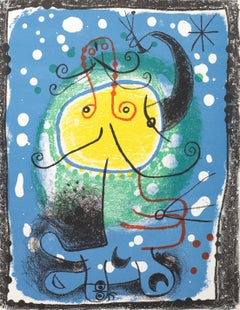Items Similar to Child-like Art - Child with Bull Horns in Boat with a Fish
Want more images or videos?
Request additional images or videos from the seller
1 of 13
Paul RandChild-like Art - Child with Bull Horns in Boat with a Fish1952
1952
$22,000
£16,806.84
€19,307.15
CA$31,498.13
A$34,455.39
CHF 17,951.71
MX$414,575.68
NOK 227,334.48
SEK 213,445.29
DKK 144,177.07
About the Item
Paul Rand is remembered as one of history's greatest and most famous graphic designers. He was also a painter. The fact that Paul Rand used Naïve Art in much of his corporate identity to represent the world's most influential companies could have pigeonholed him as only a commercial artist rather than a fine artist.
In 1952, consideration of Naïve Art as Fine Art was restricted to artists such as Henri Rousseau, Picasso, and Paul Klee. Yet the present work "Child with Bull Horns in Boat with a Fish" exhibits a similar level of sophistication in its childlike simplicity that one could find in any of the more recognized Naïve Artists. Notice how Rand separates above and below sea level with a simple line. The inclusion of a friendly fish is more than charming.
Signed and Dated lower right 12 8 52, Unframed,
Paul Rand once wrote, “Good design adds value of some kind, gives meaning, and, not incidentally, can be sheer pleasure to behold.” Rand produced good design for six decades, creating magazine layouts, posters, children’s books, book covers, and the branding for many of America’s most recognizable corporate identities, all of which embody the visual clarity and dynamic compositions for which he is known. Rand’s best-known designs are celebrated for their visual wit. For the UPS logo he designed in 1961, Rand set a neatly tied package atop a shield bearing the company’s name, juxtaposing the whimsy of the parcel against the pomposity of the coat of arms. Rand also famously developed a graphic program for IBM in 1956, supplementing it in 1981 with the brilliant Eye-Bee-M poster, which reimagined the company’s logo as a rebus. “I steered towards humorous things,” Rand said. “People who don’t have a sense of humor really have serious problems.”
- Creator:Paul Rand (1914 - 1996, American)
- Creation Year:1952
- Dimensions:Height: 12 in (30.48 cm)Width: 16 in (40.64 cm)
- Medium:
- Movement & Style:
- Period:
- Condition:overall very good condition, unframed.
- Gallery Location:Miami, FL
- Reference Number:1stDibs: LU385315481442
Paul Rand
Paul Rand (born Peretz Rosenbaum; August 15, 1914 – November 26, 1996) was an American art director and graphic designer. He was best known for his corporate logo designs, including the logos for IBM, UPS, Enron, Morningstar, Inc., Westinghouse, ABC, and NeXT. He was one of the first American commercial artists to embrace and practice the Swiss Style of graphic design. Rand was a professor emeritus of graphic design at Yale University in New Haven, Connecticut where he taught from 1956 to 1969, and from 1974 to 1985. He was inducted into the New York Art Directors Club Hall of Fame in 1972.
Though Rand was a recluse in his creative process, doing the vast majority of the design load despite having a large staff at varying points in his career, he was very interested in producing books of theory to illuminate his philosophies. László Moholy-Nagy may have incited Rand's zeal for knowledge when he asked his colleague, at their first meeting, if he read art criticism. Rand said no, prompting Moholy-Nagy to reply "Pity."Steven Heller elaborates on this meeting's impact, noting; "from that moment on, Rand devoured books by the leading philosophers on art, including Roger Fry, Alfred North Whitehead, and John Dewey."These theoreticians would have a lasting impression on Rand's work; in a 1995 interview with Michael Kroeger discussing, among other topics, the importance of Dewey's Art as Experience, Rand elaborates on Dewey's appeal: [... Art as Experience] deals with everything — there is no subject he does not deal with. That is why it will take you one hundred years to read this book. Even today's philosophers talk about it[.] [E]very time you open this book you find good things. I mean the philosophers say this, not just me. You read this, then when you open this up next year, that you read something new. Dewey is an important source for Rand's underlying sentiment in graphic design; on page one of Rand's groundbreaking Thoughts on Design, the author begins drawing lines from Dewey's philosophy to the need for "functional-aesthetic perfection" in modern art. Among the ideas Rand pushed in Thoughts on Design was the practice of creating graphic works capable of retaining recognizable quality even after being blurred or mutilated, a test Rand routinely performed on his corporate identities. From: Wikipedia
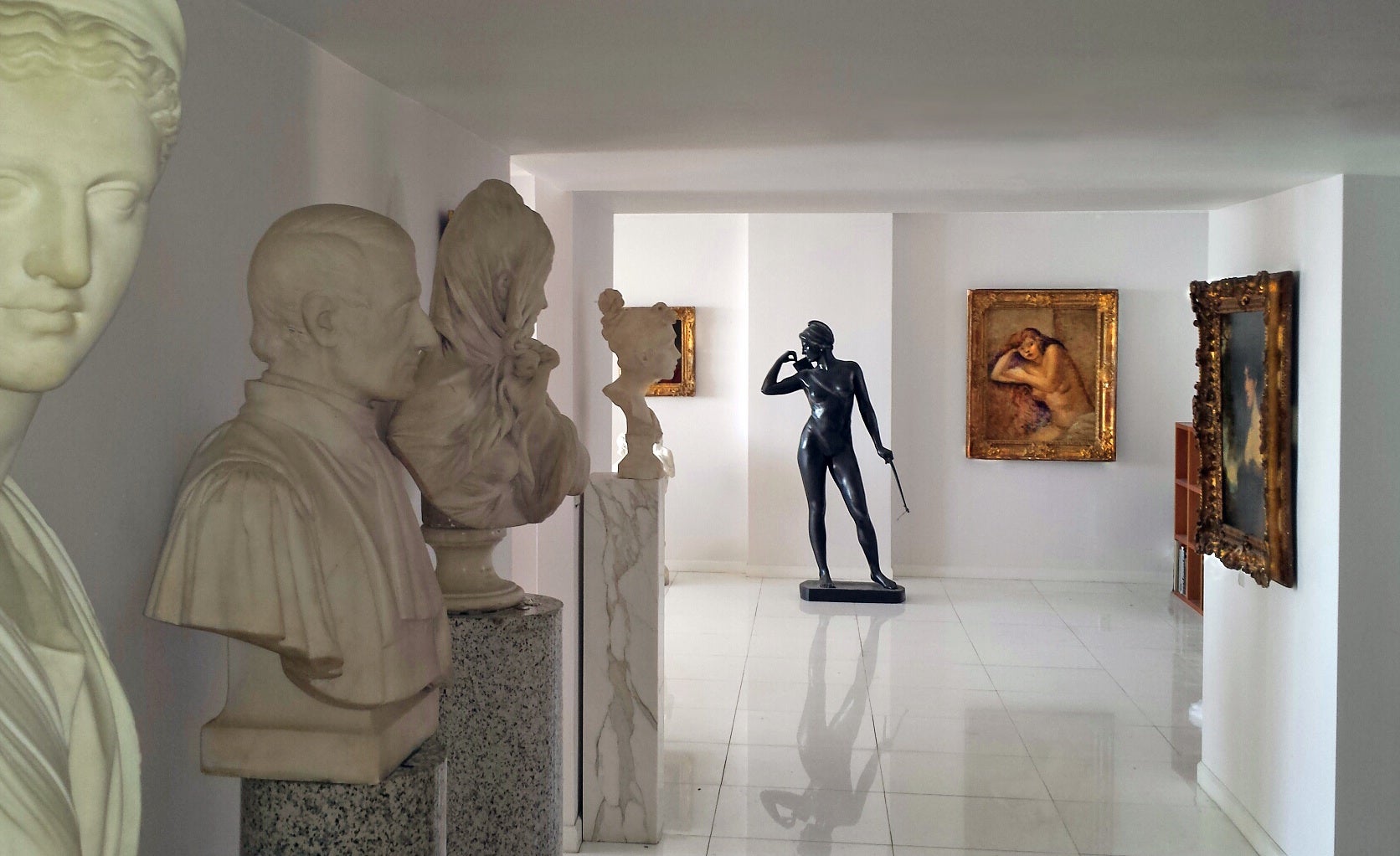
About the Seller
5.0
Vetted Professional Seller
Every seller passes strict standards for authenticity and reliability
Established in 2005
1stDibs seller since 2016
117 sales on 1stDibs
Typical response time: 1 hour
- ShippingRetrieving quote...Shipping from: Miami, FL
- Return Policy
Authenticity Guarantee
In the unlikely event there’s an issue with an item’s authenticity, contact us within 1 year for a full refund. DetailsMoney-Back Guarantee
If your item is not as described, is damaged in transit, or does not arrive, contact us within 7 days for a full refund. Details24-Hour Cancellation
You have a 24-hour grace period in which to reconsider your purchase, with no questions asked.Vetted Professional Sellers
Our world-class sellers must adhere to strict standards for service and quality, maintaining the integrity of our listings.Price-Match Guarantee
If you find that a seller listed the same item for a lower price elsewhere, we’ll match it.Trusted Global Delivery
Our best-in-class carrier network provides specialized shipping options worldwide, including custom delivery.More From This Seller
View AllUntitled, Cat and Rooster
By Paul Rand
Located in Miami, FL
The work represents a wide eye cat staring at a rooster. The work is as simple as it's complex. The negative space is as important as the positive space. It's as sophisticated as it'...
Category
1940s Abstract Expressionist Animal Paintings
Materials
Acrylic, Pencil
Untitled Owl in the Grass
By Paul Rand
Located in Miami, FL
Signed and dated to lower right 'Paul Rand 4.6.52.
Paul Rand said. “People who don’t have a sense of humor really have serious problems.”
Besides being a seminal force in modern desi...
Category
1950s Outsider Art Animal Paintings
Materials
Pastel, Acrylic
Asian Calligraphic Shapes Over Biomorphic Forms
By Paul Rand
Located in Miami, FL
Legendary Graphic designer Paul Rand was also a Fine Artist/Painter. In the present work, " Untitled: Asian Calligraphic Shapes Over Biomorphic Forms," Paul explores the relationship...
Category
1950s Minimalist Abstract Drawings and Watercolors
Materials
Paper, Watercolor, Gouache, Pencil
Portrait of an African - Collage
By Ivan Chermayeff
Located in Miami, FL
Mixed media on paper, 1990, signed 'Ivan Chermayeff' and dated lower right, titled lower left.
30 x 22 in. (sheet), 36 x 28 in. (frame).
Provenance:The artist, Art Planning Consult...
Category
1990s Abstract Geometric Mixed Media
Materials
Found Objects, Mixed Media, Archival Paper
African with Brian's Note
By Ivan Chermayeff
Located in Miami, FL
Mixed media on paper, 1990, signed 'Ivan Chermayeff' and dated lower right, titled lower left.
30 x 22 in. (sheet), 36 x 28 in. (frame).
Provenance:The artist, Art Planning Consult...
Category
1990s Abstract Geometric Mixed Media
Materials
Found Objects, Mixed Media, Archival Paper
African with Brian's Note
By Ivan Chermayeff
Located in Miami, FL
Mixed media on paper, 1990, signed 'Ivan Chermayeff' and dated lower right, titled lower left.
30 x 22 in. (sheet), 36 x 28 in. (frame).
Provenance:The artist, Art Planning Consult...
Category
1990s Abstract Geometric Mixed Media
Materials
Found Objects, Mixed Media, Archival Paper
You May Also Like
"Personnage et oiseau" pochoir
By (after) Joan Miró
Located in Henderson, NV
Medium: pochoir (after the oil on paper). Printed in 1965 at the atelier Daniel Jacomet in an edition of 1200 for the rare exhibition catalogue "Miro Cartones 1959-1965" and publishe...
Category
1960s Abstract Prints and Multiples
Materials
Lithograph
Miró (tariff free*), Femme et oiseau (Cramer 103; M. 382-383), Cartones (after)
By Joan Miró
Located in Southampton, NY
Lithograph, stencil on vélin paper. Paper Size: 12.375 x 8.687 inches. Inscription: Signed in the plate and unnumbered, as issued. Catalogue raisonné references: Cramer, Patrick, and...
Category
1960s Surrealist Abstract Prints
Materials
Lithograph
$1,046 Sale Price
30% Off
Free Shipping
Miró (tariff free*), Personnage et oiseaux (Cramer 103; M. 382-383) (after)
By Joan Miró
Located in Southampton, NY
Lithograph, stencil on vélin paper. Paper Size: 12.375 x 8.687 inches. Inscription: Signed in the plate and unnumbered, as issued. Catalogue raisonné references: Cramer, Patrick, and...
Category
1960s Surrealist Abstract Prints
Materials
Lithograph
$1,046 Sale Price
30% Off
Free Shipping
Personnage (Mourlot 244), Société internationale d'art XXe siècle
By Joan Miró
Located in Southampton, NY
Lithograph, stencil on vélin paper. Paper Size: 12.4 x 9.65 inches. Inscription: Unsigned and unnumbered, as issued. Catalogue raisonné references: Queneau, Raymond. Joan Miró, Litho...
Category
1950s Surrealist Abstract Prints
Materials
Lithograph
$1,116 Sale Price
30% Off
Free Shipping
Sans titre V (Cramer 230; Mourlot 1117), Joan Miró Lithographs
By Joan Miró
Located in Southampton, NY
Lithograph on vélin paper. Paper Size: 12.5 x 9.625 inches. Inscription: Unsigned and unnumbered, as issued. Catalogue raisonné references: Cramer, Patrick, and Joan Miró. Joan Miró,...
Category
1970s Surrealist Abstract Prints
Materials
Lithograph
$626 Sale Price
30% Off
Free Shipping
(tariff free*) Papier collé, Société internationale d'art XXe siècle
By Joan Miró
Located in Southampton, NY
Lithograph, stencil on vélin paper. Paper Size: 12.4 x 9.65 inches. Inscription: Signed in the plate and unnumbered, as issued. Notes: From the album, XXe siècle, Nouvelle série N° 6...
Category
1950s Surrealist Still-life Prints
Materials
Lithograph
$906 Sale Price
30% Off
Free Shipping
More Ways To Browse
Vintage Fish Art
Vintage Company Logos
Bull Horn
Vintage Children Posters
Vintage Bull Horns
Vintage Bee Poster
Crime And Punishment
Cubist Face Painting
Flapper Painting
John Vanderbank
Mayer Mid Century Painting
Mick Jagger Painting
Oil Portrait Tina
Okamura Arthur
Queen Mary Of Scots Portrait
Renaissance Woman Painting
Sara Scribner
Small Oil Portrait
